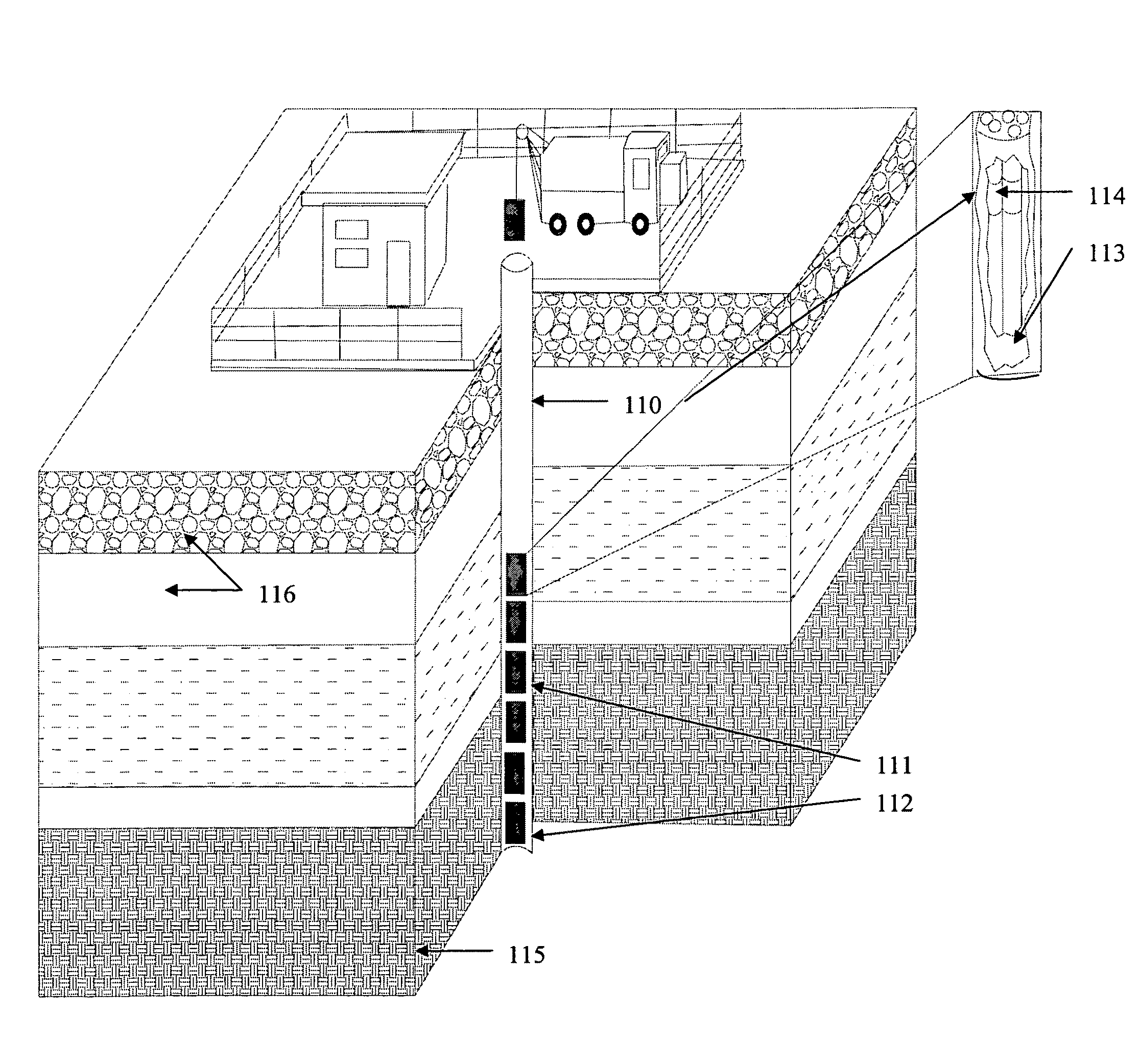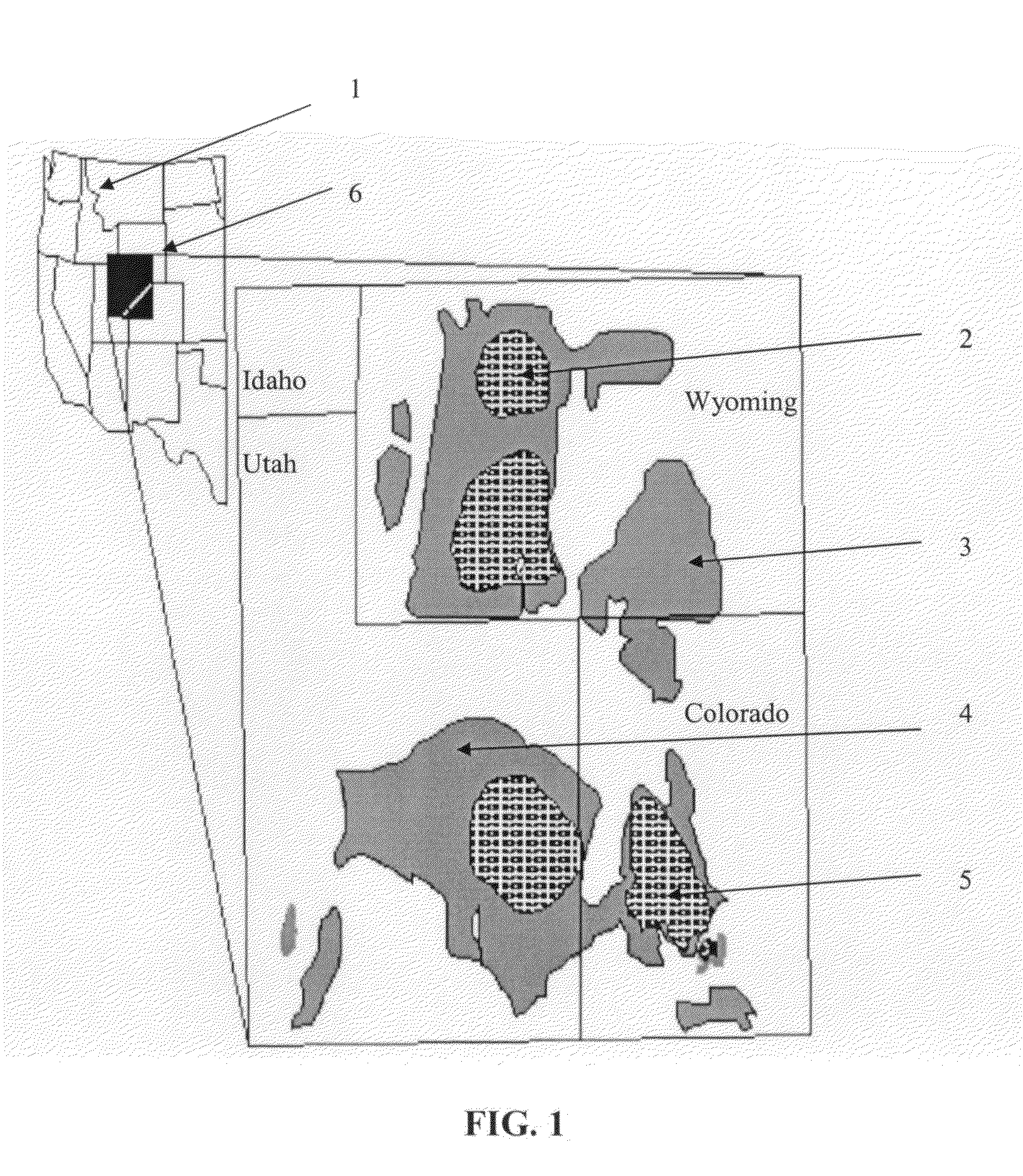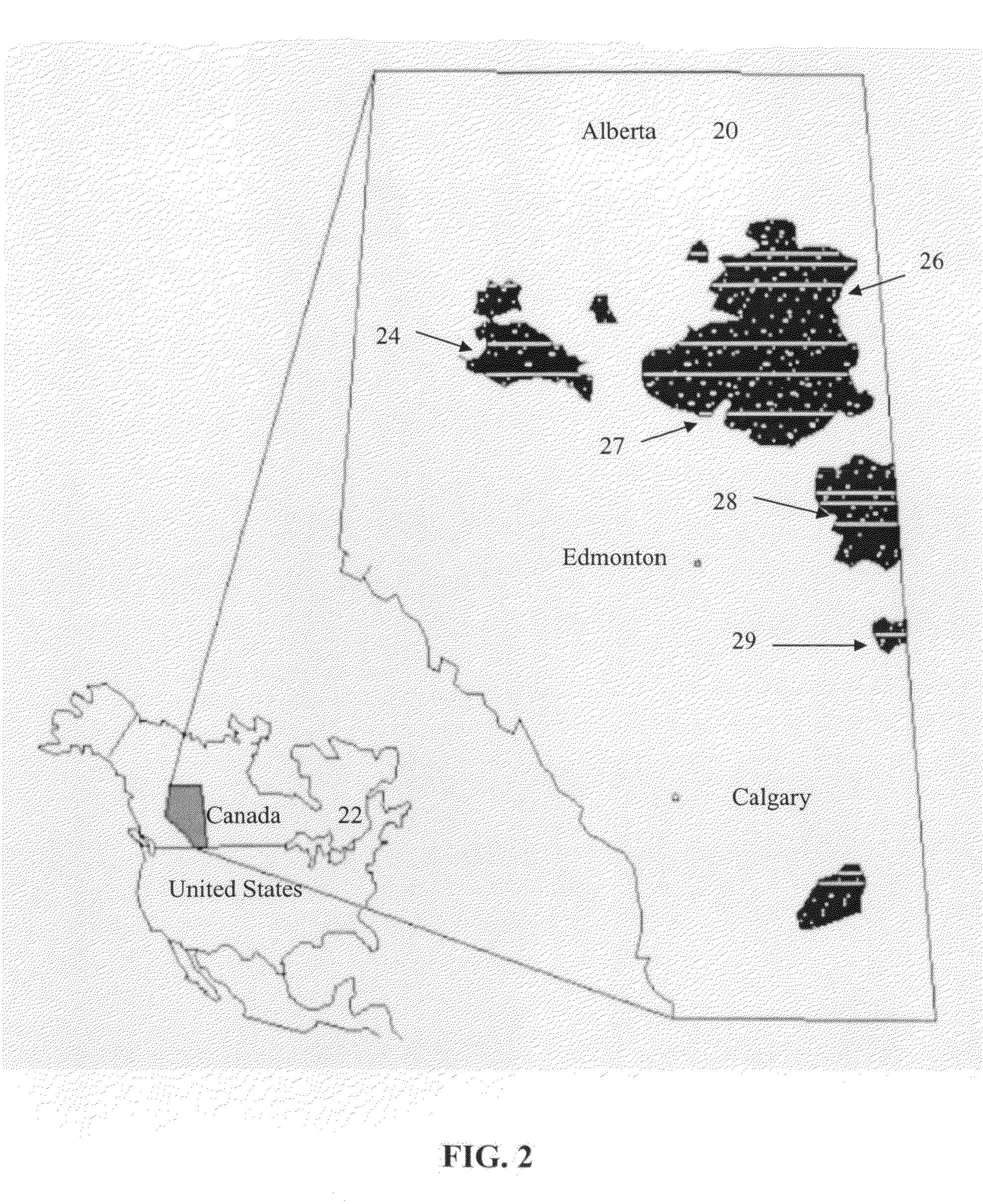Nuclear Assisted Hydrocarbon Production Method
a technology of nuclear energy and hydrocarbons, which is applied in the field of nuclear energy assisted hydrocarbon production methods, can solve the problems of affecting the development progress of nuclear energy, affecting the performance of the repository, and being unable to make reliable estimates of the performance over such long time frames, so as to preserve containment properties, prolong safety, and minimize the size of excavation
- Summary
- Abstract
- Description
- Claims
- Application Information
AI Technical Summary
Benefits of technology
Problems solved by technology
Method used
Image
Examples
Embodiment Construction
[0098]In respect of the following and previously set out description and explanation, it should be understood that while the information given is considered to be correct, such explanations are necessarily somewhat speculative since the amount of factual information relating to geologic processes that took place millions of years ago is limited. Applicant would not want to be bound, therefore, by the following if, subsequently, new and better information becomes available. The explanations hereinafter given are made for the purpose of full and complete disclosure of the invention but the qualification given above should be borne in mind.
[0099]The following description generally relates to systems and methods for eliminating SNF and plutonium in an unconventional oil formation. Such formations may be treated to yield relatively high quality hydrocarbon products, H2, and other products.
[0100]“Hydrocarbons” are organic material with molecular structures containing carbon and hydrogen. ...
PUM
 Login to View More
Login to View More Abstract
Description
Claims
Application Information
 Login to View More
Login to View More - R&D
- Intellectual Property
- Life Sciences
- Materials
- Tech Scout
- Unparalleled Data Quality
- Higher Quality Content
- 60% Fewer Hallucinations
Browse by: Latest US Patents, China's latest patents, Technical Efficacy Thesaurus, Application Domain, Technology Topic, Popular Technical Reports.
© 2025 PatSnap. All rights reserved.Legal|Privacy policy|Modern Slavery Act Transparency Statement|Sitemap|About US| Contact US: help@patsnap.com



